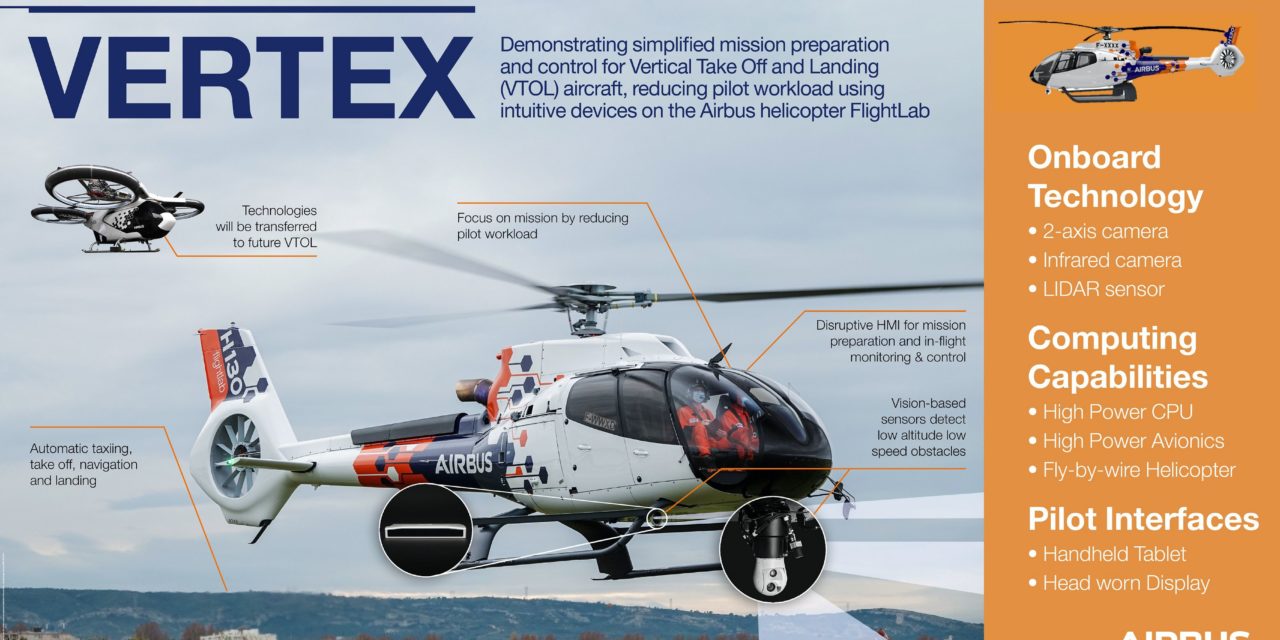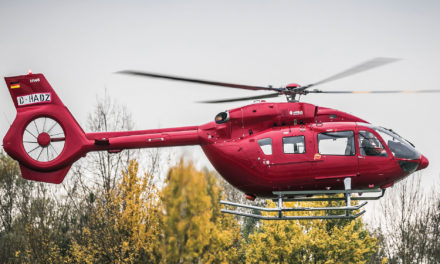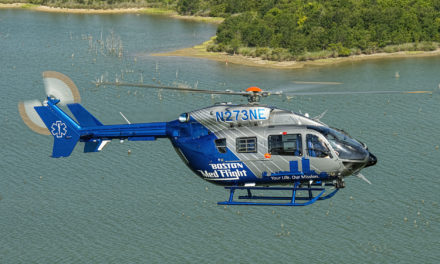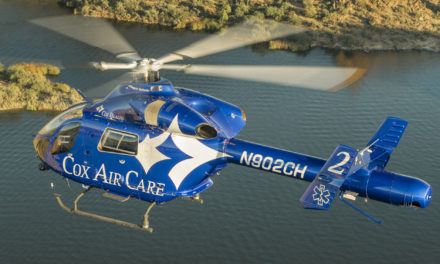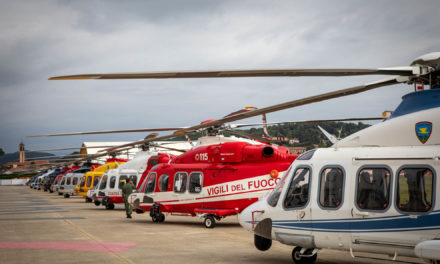Airbus is introducing autonomous features to its helicopter Flightlab through a project code-named Vertex. These technologies aim to simplify mission preparation and management, reduce helicopter pilot workload, and further increase safety.
The autonomous technology bricks set to integrate the Flightlab are: vision based sensors and algorithms for situational awareness and obstacle detection; fly-by-wire for enhanced auto-pilot; and an advanced human-machine-interface – in the form of a touchscreen and head worn display for inflight monitoring and control.
The combination of these technologies will enable a system that can manage navigation and route preparation, automatic take-off and landing, as well as following a predefined flight path. The incremental integration of these technologies onto the helicopter Flightlab has begun ahead of a complete demonstration in 2023. Airbus’ Urban Air Mobility will also benefit from this technology as an essential stepping stone towards autonomous flight.
“We are excited by the potential that the Vertex demonstrator project has to offer,” said Grazia Vittadini, Chief Technology Officer, Airbus. “By using our platform-agnostic flying laboratory to mature these technologies, we have an agile and efficient test bed that will support the development of future autonomous systems that could later equip Airbus’ current helicopter range and (e)VTOL platforms.”
Airbus’ mission is not to move ahead with autonomy as a target in itself, but to explore autonomous technologies alongside other technological innovations. In doing so, Airbus is able to analyse the potential to enhance future operations, and at the same time, leverage these opportunities to further improve aircraft safety.
Vertex is managed by Airbus UpNext, an Airbus subsidiary created to give future technologies a development fast-track by building demonstrators at speed and scale, evaluating, maturing and validating new products and services that encompass radical technological breakthroughs.

